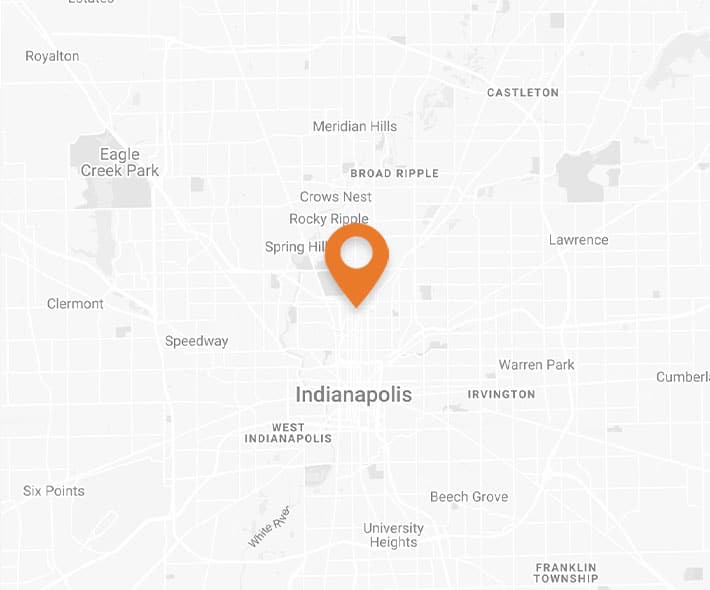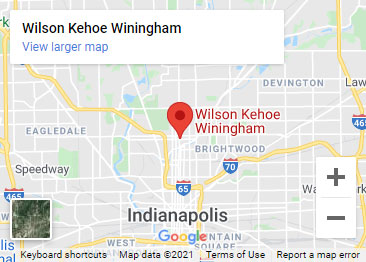Teen Driving Statistics: Statistics on Teenage Car Accidents in Indiana
Updated January 23, 2024 | By W. Kent Winingham
Think about the first time you handed over the car keys to your teenager. Did you feel excited, nervous, afraid, or proud? Maybe a combination?
Driving is a significant milestone filled with independence and excitement. Still, it’s also essential to understand teen driving statistics and laws before allowing your child to get behind the wheel of a car to encourage your teen in safe driving habits. Keep your teen drivers safe by educating them about the rules and dangers of the road.
Teenage Car Accident Statistics
The number of teenage car accidents per year is staggering. In fact, according to the Centers for Disease Control and Prevention (CDC), motor vehicle crashes are the leading cause of death for teenagers in the United States. Read on for some of the most relevant teen driving stats.
What Age Group Causes the Most Car Accidents?
Newly licensed teens (aged 16) are the most likely age group to be in a car accident.
How Many Teens Are Killed in Car Accidents?
The CDC found that drivers between 16 and 19 are nearly three times more likely to be in a fatal crash than drivers aged 20 or older. About 2,800 teens died, and about 277,000 needed to be treated in emergency rooms in 2020 for injuries from motor vehicle crashes. This is an average of eight deaths and hundreds of injuries every day.
What Percentage of Car Accidents Are Caused by Teenage Drivers?
According to AAA, teenage drivers had the highest rate of car accidents. The statistics are as follows:
- Drivers between the ages of 16-17 had the highest rate of crashes per 100 million miles driven: 1432 per 100 million miles.
- Drivers between 18-19 were second with 730 crashes per 100 million miles.
- This rate declines with age until it reaches its lowest point among 60- to 69-year olds with 241 crashes per 100 million miles. After that, the numbers start to increase for drivers in their 70s and 80s, but they never reach the same levels as teen drivers.
Does Gender Play a Role in Car Accident Risk?
Suppose you’ve had the experience of adding your teens to your car insurance policy. In that case, you may have noticed that teenage males’ premiums are typically the highest rates of all demographic groups. Their driving records may be to blame. According to the Association for the Advancement of Automotive Medicine:
- In 2020, the death rate for teenage male drivers was three times higher than that of their female counterparts.
- Teenage males are more likely to be involved in speeding-related crashes than females.
- Teenage males involved in crashes are likely to have a BAC of at least 0.08%.
Social scientists are still studying the reasons behind these disparities. In the meantime, parents can discuss these risks with their sons and help them prevent accidents.
Causes of Teenage Driving Accidents
When you read the grim statistics behind teenage car accidents, you may feel helpless to prevent a car accident. The best thing you can do is educate yourself—and your teen—on the most common reasons accidents happen.
Distracted Driving
A significant cause of car accidents among teen drivers is distracted driving. In 2020, 186 teens died in car accidents due to distracted driving.
Distracted driving can take many forms for teenage drivers:
- Interacting with other passengers
- Using a cell phone to text or call
- Looking at something inside or outside of the vehicle
- Singing or dancing to music
- Grooming or applying makeup
- Eating and drinking
- Changing the radio station
- Reaching for an object inside the car
Driving with a friend, using a cell phone, and looking for objects in the car are everyday activities, even for experienced drivers. However, they are particularly dangerous for young drivers, who are still learning to process information, make rapid decisions, and perform dozens of minute adjustments as they drive. These mental activities will become second nature as they log more hours behind the wheel. Still, in the meantime, cell phones, passengers, and other distractions will only make driving more difficult.
Driving with Passengers
Although driving with passengers may technically fall under the category of distracted driving, its effects are so significant that it deserves special attention.
According to the National Highway Traffic Safety Administration (NHTSA), teens’ risk of a fatal crash increases proportionately with the number of teenagers in the car. In fact, they found that teen drivers were up to three times more likely to engage in risky driving behavior when driving with multiple passengers.
For this reason, limiting the number of passengers in your teen’s car may be a wise choice. Most states have passed laws restricting the number of passengers a teen can have. Indiana disallows teens from driving with most passengers (there are some exceptions, such as siblings or their own children) for 180 days after they get their probationary license. Even after this period, you may still want to limit your teen’s passengers based on their maturity and driving skills. After all, you know your teen best.
Speeding
One of the most critical safety issues for teen drivers is speeding. It was a contributing factor in 31% of fatal crashes in Indiana. As teens become more confident behind the wheel, they are more likely to speed (exceed the speed limits), despite their crash risk decreasing with experience.
It is crucial to educate/warn your children about the dangers of speeding. Speeding puts them at risk of receiving a ticket and increases their likelihood of being in a severe accident.
How can you prevent them from speeding? Two key pieces of research stand out:
- Limit their passengers: As stated above, having passengers can increase risky behavior in teens. According to the CDC, behaviors like speeding increase the most when a male teenage passenger is present.
- Reconsider that new car: If a teenager has their own vehicle, they may be more likely to speed than if they were driving the family car, according to the GHSA.
Finally, it’s worth a reminder that your teens look to you as their role model. So when you drive together, always stay within the speed limit. Teens are likely to listen to you if you set a good example.
Drug and Alcohol Use
It goes without saying that teens should never use alcohol or illegal drugs. They are unsafe for their developing bodies and brains, and it’s against the law. However, unfortunately, data from a 2020 study showed that 29% of the teens killed in car crashes had been drinking.
However, alcohol is not the only substance that can affect driving. Marijuana use among teens is the second most common drug (after alcohol) associated with impaired driving.
Legal medication can also impair driving. It’s important to recognize that your teens may not know the risks of some prescription and over-the-counter drugs. For example, many medications can cause dizziness, drowsiness, or other side effects that can make driving unsafe. Ask your teen’s doctor or pharmacist whether their medicines can affect their driving ability. Remind them to read the warning label when taking new medications, prescription or otherwise. When teens know about the potential dangers of taking medications, they can best decide whether they should skip the medication for now or forgo driving. Understanding the risks and benefits can help them make the right decision for their health and safety on the road.
Inexperience
Despite the number of teens who break the law by speeding or driving under the influence, it’s important to note that not all teen accidents are due to bad behavior like speeding or driving under the influence. These accidents may happen because teens need to gain experience to be safe drivers.
New drivers are juggling a lot of new information, and they must make many quick decisions to stay safe on the road – decisions experienced drivers have learned to make quickly. At first, teens may still have trouble remembering the rules of the road. They may become anxious more easily or panic when handling a new situation. They may underestimate how dangerous a situation is, such as an icy road or a heavy rainstorm. They may hit the brakes too soon or not slow down quickly enough.
The good news is they can significantly improve after only a few years of driving. Data from the Insurance Institute for Highway Safety (IIHS) shows that 16-year-old drivers have the highest crash rate. When comparing the crash rates per mile driven, 16-year-olds have a rate more than 1 ½ times higher than 18-19-year-olds. In addition, their risk of crashing is highest in the first months of obtaining their license.
Although this sounds nerve-wracking to parents of newly-licensed drivers, you can use this information as a reminder to bolster your teens’ skills at the beginning of their driving journey. As they accumulate more experience, the safer they will statistically be.
Other causes of teen car accident injuries and fatalities include not using a seat belt, drowsy driving, and reckless or aggressive driving.
Teen Driving Laws in Indiana
Let’s face it: Distractions are sometimes very difficult to avoid while driving—no matter how old the driver is. Several states have taken note of the devastating teen driver accidents, injuries, and fatalities and have attempted to make a difference.
The Indiana Graduated Driver Licensing (GDL) program is more interactive and complex than in some states. The goal is to reduce accident fatalities and give teen drivers more preparation and experience. GDL programs in Indiana have a three-step process:
- A combination of in-class and behind-the-wheel training performed simultaneously—not in separate segments
- More hours of driving experience spread across each season to give teen drivers weather-related experience and expectations
- Granting of a driver’s license is based on skill, experience, and performance instead of completing a certain amount of driving time
In addition, in the summer of 2009, Indiana changed its GDL laws: If drivers are granted a license at 16 or 17 years old, they are under a probationary period until they turn 18. And finally, in 2011, Indiana added more driving time as a requirement for obtaining a license and increased parent or guardian participation while teens learn to drive.
Contact an Automobile Accident Attorney Today
By learning statistics about teenage car accidents, you can empower your teens to follow best practices when they drive. Unfortunately, despite education and awareness, the worst can still happen. Complications from a severe or fatal crash can last a lifetime. However, if your family can recover damages from the accident, it can help you and your teen start to rebuild your lives.
If your teen was in a car crash, we urge you to contact the experienced car accident attorneys of Wilson Kehoe Winingham. Our Indianapolis car accident lawyers at WKW can help you get the compensation you deserve. Contact us today for a free, no-obligation case evaluation.
Contact Us
Let WKW put our experience to work for you. Contact us for your free case evaluation.
Or, call us today at (317) 920-6400


